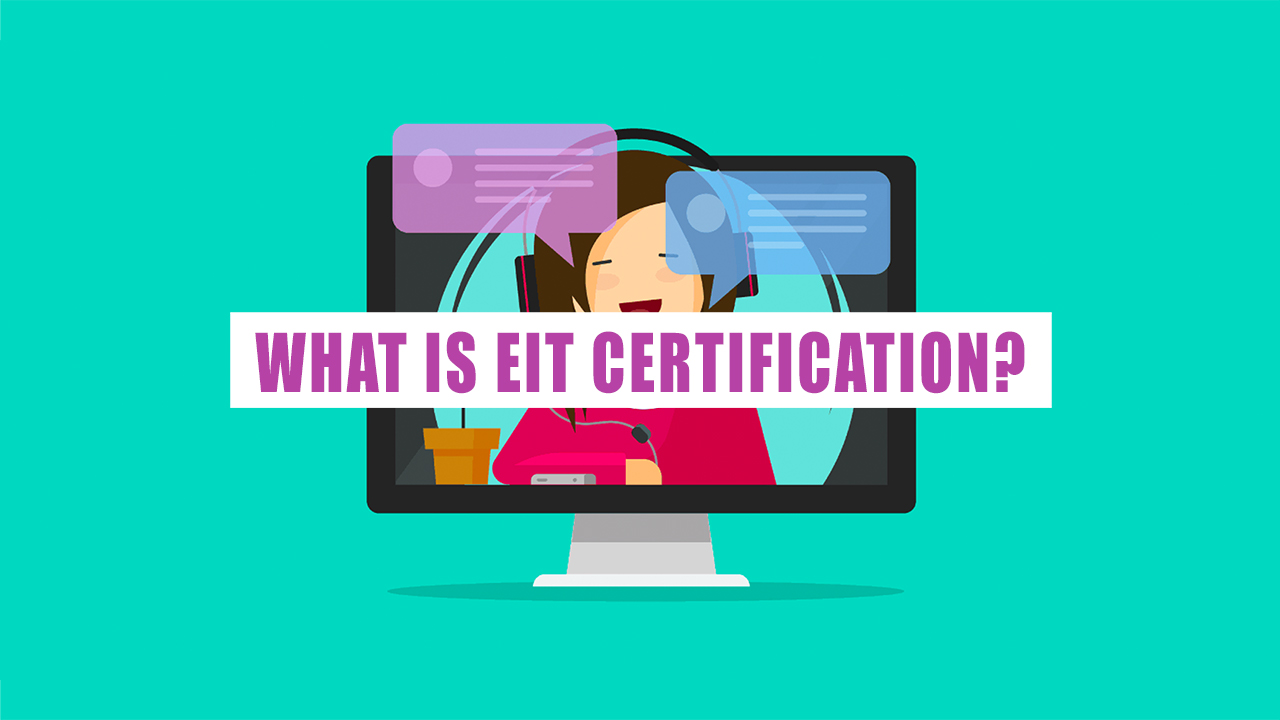Refer to this link regarding the review of the Reference Manual prior to the exam. You can download the NCEES Reference Handbook HERE
…
Can I review the reference handbook that is handed out by NCEES prior to the exam?
Absolutely, and it is extremely important that you do so. In college, we were able to produce a 1 page cheat sheet of common formulas and other related information to use during our exams. These cheat sheets were produced by us, thus, we were familiar with the format and the areas of needed information while taking the test. At times it made it easier, but other times it may have made things more difficult because we either jammed too much information on to the sheet, or did not organize it good enough. The Reference Handbook is no different then these cheat sheets. It is quite a bit larger, and for that reason, it is a must that it is purchased prior to ensure you are familiar from front to back where the certain information is stashed.
Head over to the NCEES website to get the reference handbook or visit the resources page for the direct link.
What Units are used on the Engineer in Training exam?
The EIT exam uses both SI (International System) and USCS (US Customary System) units for the problems. It is important to be competent both in recognizing and converting in to and out of each of the unit structures.
You can get to know a little more about the format here
Lost? Head back to the homepage to get more of your questions answered.
Do I have to take any more exams after I pass the Engineer in Training exam?
The Engineer in Training (EIT) exam is the first step in acquiring your Professional Engineer (PE) License. Once you pass the Engineer in Training exam and gain the designation of EIT, it is not required to take any further tests to maintain the designation. You may though need to pay a fee to renew the certification every given period of time as defined by your specific State Board of Engineers.
At the time of passing, you enter a period in which you work under the supervision of a Registered Professional Engineer to gain experience. Once this experience is gained, typically 4 years, you will need to apply for and take the Professional Engineer exam, which is also administered by NCEES. When you take and pass the Professional Engineer Exam you become a PE and are no longer referred to as an EIT.
Need to get back to the homepage? Click Here
Can I put the acronym EIT or EI after my name on things like my Business card and Emails?
Yes, this is the typical way that you announce to people that you are an Engineer in Training or Engineering Intern. As each state regulates the use of certain “engineer” terms until one is registered, you are not allowed to refer to yourself using variations of “engineer” (e.g., registered engineer, licensed engineer, Mechanical Engineer, Professional Engineer…). This means you can not put your “position title” on your business card or email signature as Electrical Engineer, Mechanical Engineer, etc. However you can use a title such as Electrical Engineer Intern or Mechanical Engineering Department, etc.
It will only be a matter of time though that you can call yourself an Engineer, stay on track, and focused. Feel free to use any of the resources on this site your shoot me an email if you have any additional questions.
What title can I use once I pass the Engineer in Training exam?
Most all states regulate the use of certain “engineer” terms. Until one is registered as a Professional, you are not allowed to refer to yourself using variations of “engineer” (e.g., registered engineer, licensed engineer, Mechanical Engineer, Professional Engineer…). You will most likely reserve the right to title yourself as an Engineering Intern (e.g. Mechanical Engineering Intern) or an Engineer in Training, this varies state to state. The acronym EIT or EI can typically be used in your signature to announce to people that you are an Engineer in training or Engineering Intern.
Use the resources on this site to learn more about what the Engineer in Training Exam can do for you both personally and professionally.
What happens after I pass the Engineer in Training exam?
First of all, pat yourself on your back for thinking ahead like this. Many people look at the Engineer in Training exam as an test that is near impossible to pass. Going in to the exam and your studies with this positive attitude is definitely setting you up on the right path to conquer the exam without looking back. Once you pass the EIT exam, you will be designated an Engineer in Training (EIT), or Engineering Intern (EI), each term means the same thing. You are commonly allowed to put the initials at the end of your name which is kind of a cool. At this time, you begin to acquire acceptable work experience towards your PE license while working under, in most cases, the supervision of a registered Professional Engineer. The experience required to apply for your PE license is typically a minimum of 4 years but differs from state to state and in some cases dependent on the accreditation of the program you graduated from.
I have an area on this site dedicated to State specific requirements that you can reference for further details.
What is EIT Certification?
Frequently Asked Questions
What is EIT Certification?
EIT Certification – it’s not uncommon to graduate college without even hearing this term, EIT or Engineer in Training for that matter.
I know for me personally, I didn’t even know the FE Exam was a thing until I started seeing it on the email signatures of others I was working with.
So it’s not a surprise when someone comes to us asking the question:
“What is EIT Certification?”
So what is all this EIT certification talk about?
Let’s get in to it.

We often get people dropping in asking us the question “What is EIT Certification?”
The reasons for asking this question could stem from a number of starting points:
- They see the acronyms EI or EIT on someone’s email signature or business card. (this was me)
- They see it as a requirement on a job they want to apply for.
- They just want to know the details because they see that it is part of the process in becoming a licensed professional engineer in their state.
Wherever you fall on this spectrum, you are finding yourself here because you have this same question.
So what is EIT Certification?
The EIT Certification, formally known as the Engineer In Training Certification, is simply a document.
This document, either physical or electronic, provides a formal means of validating that you have successfully showed competent knowledge of the fundamentals of engineering.
The EIT certification, and it’s associated number, is issued by each individual’s state engineering board after he or she passes the Engineer In Training Exam.
What is the Engineer In Training Exam?
The Engineer in Training Exam (EIT Exam) is the first of two exams you will take as you move towards getting your Professional Engineering License (PE).
This exam, which you may also hear referred to as the Fundamentals of Engineering exam (FE Exam), is developed and administered in all states (and a number of locations outside the US) by the National Council of Examiners for Engineering and Surveying (NCEES).
The FE Exam is offered to eligible students year-round in four different testing windows.
You can learn more about what this exam is all about here:
What is the Engineer In Training Exam?
But back to this EIT Certificate, do I get any benefits with it?
Well, yes…and no.
The EIT Certificate simply signifies that you have successfully shown competence in the Fundamentals of Engineering.
So in passing it, you won’t be granted any special legal privileges that would come with having your PE license.
However, the PE license is the ultimate goal, and with that, having knocked out the first milestone in the process may bring undocumented benefits.
Here are a few.
Shows initiative
Passing the FE Exam shows potential employers (and current employers) that you are committed to your professional development.
Showing commitment and initiative is a positive trait in the eyes of the employers. Whether explicitly stated or not, employers want to make the best hires that bring the least risk and most potential return.
Having already passed the FE Exam, and gotten your EIT Certification, may well be the thing that employers see that causes them to invest in you today in hopes that it may bring them a better return in the future.
Opens opportunities
Even more, with an increasing number of job postings requiring the EIT Certificate, more opportunities may open – giving you as the talent increased options and better leverage across the pool of engineers.
So should I get my EIT certificate now?
First, you need to take the FE Exam, and then you can apply for your EIT Certificate.
So I guess the better question is, should you take the FE Exam now?
The answer is yes.
The FE Exam is a big deal, and in fact, from my own experience and the others I have helped pass the FE and go on to become Professional Engineers, it’s the harder of the two exams that you will take on this journey.
And there are a number of reasons for this.
Fundamental knowledge
First, the FE Exam is developed to test your knowledge in the Fundamentals of Engineering.
Though we have all taken these fundamental classes in college, often times, the moment we step out of our final exam is the last time that we actually apply much of what we learned.
Let’s be real, when we get in to the field post-academia, we aren’t applying the Bernoulli Equation or doing stress analysis by hand.
There is technology for all this.
We forget – it’s that simple
So though you will be seeing the same exact exam that one who is just graduating, the longer you wait, in theory –
The harder it will become.
This is because as time goes by, more and more of that fundamental knowledge is purged in exchange for new knowledge that is applicable in the moment.
That’s just life.
Though it may seem like it, the exam doesn’t get “harder” in the content that is presented.
It just becomes “harder” to prepare for and perform on due to the length of time that we have actually applied it in our own lives.
So whether or not you plan on becoming a PE in the future, taking and passing the FE Exam and getting your EIT Certificate now would be the smart move.
Having it done and out of the way for a time that you actually “need” it, is better than rushing to figuring out how to prepare and get it out of the way.
What are the steps and other requirements I need to fulfill to get my EIT Certificate?
Though each state has their own unique requirements (which can be referenced here as a starting point), the steps can be generally laid out as the following.
1. Gain Eligibility to take the FE Exam
Generally speaking, if you are in your senior year or a graduate of an ABET Accredited Engineering program then you can apply for and take the FE Exam.
If you aren’t sure if your program is ABET Accredited, you can check to see here.
But don’t worry if it isn’t, or if you don’t have an engineering degree at all – there is still hope.
The requirements for applying for the FE Exam are unique and driven by each individual state’s engineering board.
With each state having the autonomy to define their own process at this stage, more and more are adopting a process of not requiring the individual to apply for approval by the state.
Instead, state’s are allowing individual’s who meet the minimum requirements to apply directly with the NCEES.
So the question is –
Does your state require a pre-approval application?
There are a few ways to confirm whether or not your state requires an application before going directly to the NCEES.
First, you can start here.
Because Rules & Regulations for each state are constantly in flux, what is described in this resource may not be up to date, so it would be important to click through to the boards website and confirm.
Another way to do a quick check is to visit the NCEES website, click on your state and then select FE Exam in the drop down menu.
Information will be populated, including a statement that generally reads:
“…[D]oes not require examinees to submit an application or an additional fee prior to registering with NCEES and scheduling an exam”.
This means you can move forward with applying for the FE Exam directly with the NCEES.
If your state does require a pre-approval application, then a link to the specific process should be included for you to visit and get all the details.
2. Register with the NCEES to take the FE Exam (Fundamentals of Engineering Exam)
The process for registering for the FE Exam starts with creating a myNCEES account, which can be done here.
3. Schedule the date of your FE Exam
When you are approved to sit for the FE exam by the NCEES, you will be sent a notification with a link to the NCEES-Pearson Vue website.
This website will show you all the available exam dates at the locations near you.
Generally, the FE Exam is offered year-round, Monday through Friday with some Saturday dates at locations around the country.
4. Study for the FE Exam
Most get to this point in the process and buckle up.
The FE Exam is a big deal, and studying for it outside of the context of a structured college course is new to everyone.
With added responsibilities of work and family, getting started with this step may well be the biggest obstacle.
If I offered to walk you through a framework that would give you clarity and confidence that you can successfully get it done, would you take it?
Details here – How can Prepineer help me pass the FE Exam?
5. Understand the exam day nuances
Walking in to your FE exam may well be the most nerve bending moment of this all.
You will be shook down and required to put everything into a locker outside the testing room.
You will then be seated.
This is a point where you don’t want to be surprised by how things work.
Do you know how the NCEES Reference Handbook will be displayed for you?
What about the scheduled breaks?
Where are you going to be taking notes?
If you don’t know, you need to know – you can’t afford to be thrown off in this most crucial time.
Downloading and reviewing the NCEES Examinee Guide is a good place to start for the most important details of your FE Exam day experience.
6. Pass the FE exam
Once you are done with the FE Exam, you will most likely walk out feeling like you just got punched in the face.
I know for me, both on my FE Exam and my PE Exam, I walked out sure I had failed.
After my PE, I had such a bad headache that I slept it off for the next day and a half.
This will likely be a thing, to some extent for you.
But it means nothing.
I have had students come to me after taking the exam to talk about future study plans because they were sure they had failed…
Emotions are just a thing we will need to navigate.
Before, during and after then FE Exam – they will be thick.
Just let them be, it’s OK, you are done.
Relax and wait for the results to come.
You will need a bit of patience
Now, talking results, you will wait about a week as results are typically released on the Wednesday following the date you took your exam.
Waiting a week may seem like a brutal joke being played on you by the NCEES, but let’s be real for a moment –
Pre-CBT, it was a wonderful 13-week’ish wait for us pen and paper pioneers.
Five’ish days is a drop in the bucket.
7. Apply for your EIT Certificate
Once you pass the FE Exam, it’s now time to apply for your EIT Certificate.
Again, the process is uniquely driven by your state’s engineering board, and some states don’t even require that you do anything.
Start here to find the link directly to your board’s website where you will find a link to the latest application process, requirements and fees.
Now, this is also a moment where we circle back to step 1 of this whole process and how you proceeded at that point.
Did you need to do a pre-approval application with your State’s board prior to taking the FE Exam?
If so, your educational background has already been verified and approved of.
Submitting an application along with the current processing fee and proof that you passed the FE Exam is all you will need to do.
If you didn’t need to submit an application up front to take the FE, then this will likely be the time where your state board will confirm that you have met all the educational standards prior to issuing the EIT Certificate.
If your educational background is on point, then all is good.
If not, then you will need to figure out what is required for you to meet the standards.
Most states have a number of ways that you can fulfill the educational requirements stemming from the degree in which you hold.
The ABET Accredited degree is the standard, and from there, variations will often require a certain number of years of experience in the field to make up –
Again, this is defined by your state board.
This isn’t a good or bad thing, it’s just a thing.
You will either need to verify your education now or when you go to apply for the PE Exam, so there really isn’t any way around it.
When you fill out application, you will provide all the required information for fulfilling the educational requirements, along with proof that you passed the FE Exam and the required fee for processing.
So that is what EIT Certification is all about.
It’s simply a certificate, a number, that attests that the individual has proven proficient in the fundamentals of the engineering discipline.
But…
What about all these other acronyms people are using?
You may be seeing Engineering Intern (EI), or Engineer In Training (EIT), or maybe even Intern Engineer (IE).
What’s the difference?
Each state has their own regulations that give you guidelines in regards to the designations you may legally use once you gain your EIT Certification.
However, each term is synonymous with one another.
All just mean that you have successfully reached a milestone in passing the FE Exam.
You can view more about your specific state’s rules and regulations that define the legal designations starting here:
FE Exam Requirements State by State
So whether you are seeing it on a business card, in an email signature or within a job description, having your EIT Certification just means that you have taken and passed the FE Exam.
So what now?
Now that you know this, where does that put you?
Is passing the FE Exam still on your list of things to do?
Are you struggling?
Maybe you have already attempted and failed.
Maybe you feel like you don’t know enough to pass.
Maybe you just think you are past the point of being able to pass having graduated a long time ago.
None of these should be stopping points, only obstacles which you work through.
That’s just life.
We have worked with thousands of engineers who had been in your same exact shoes.
Shoes of limiting beliefs.
Shoes of strong fear of failure.
Shoes of uncertainty.
I just want you to know that these are all normal, give yourself some grace.
The only thing you need to do is take action.
One small action at a time and build on that.
It’s possible if you are willing to give yourself that chance.
Passing the FE Exam shouldn’t be a mystery.
Sadly though, many are doubting that they can get it done, and in turn, are giving up on themselves and their careers.
If I offered to show you a system that has worked for thousands in your same shoes, would you take it? Click here to start your trial and learn the exact framework that will help you pass the FE Exam now.




